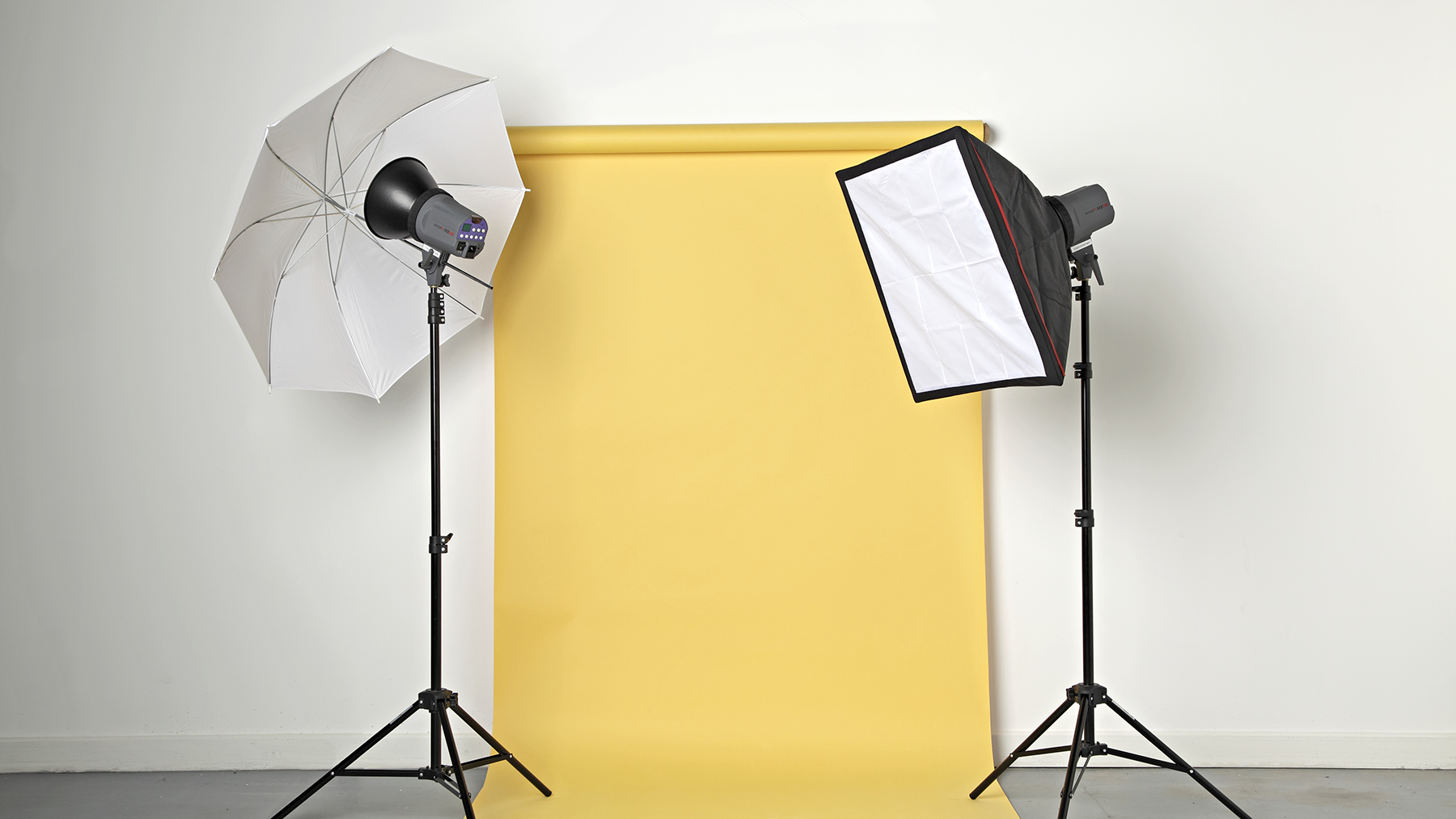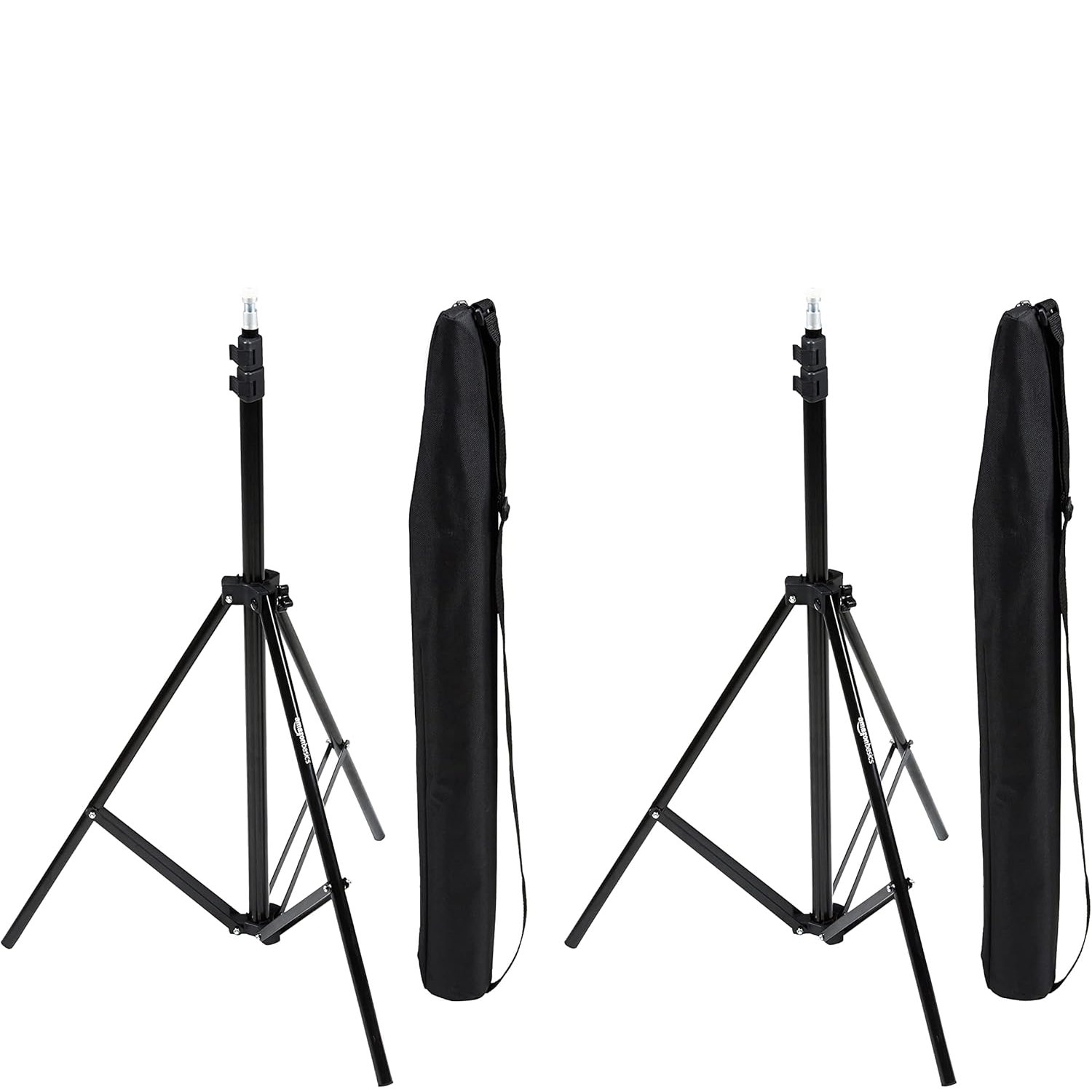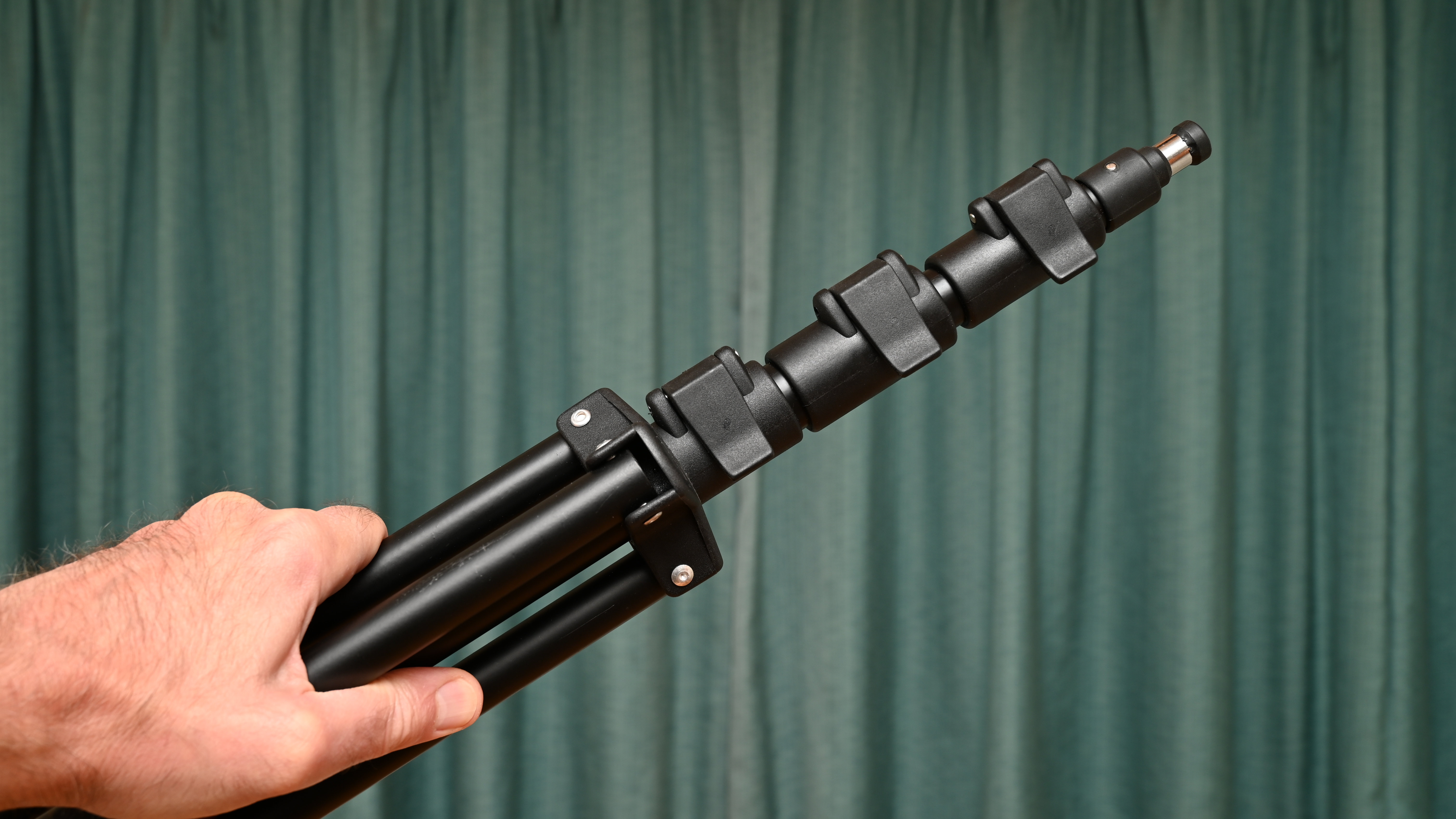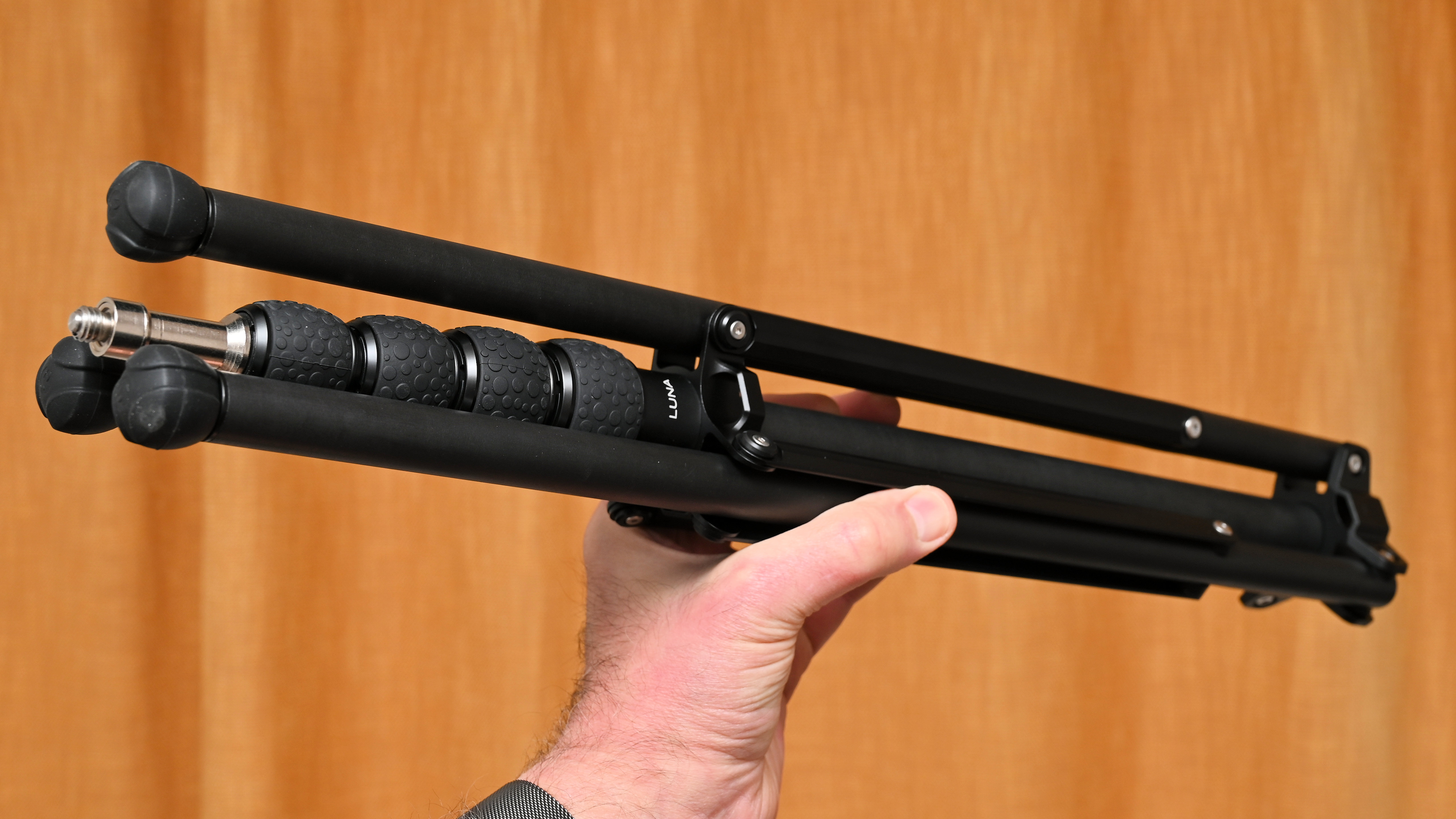The best light stands in 2025: solid support for studio flash heads, LED panels and more
Give a firm footing to studio lights, reflectors, backgrounds, and other accessories, with the best light stands on the market

When you’re using a studio flash head, LED lighting panel or even a flashgun, a light stand is a vital piece of equipment. It’s an essential bit of lighting kit, whether you're shooting indoors in a professional working studio or a home setup, or even out on location. So I've brought together the top models on the market, to help you find the right one for you.
Whenever you're using one of the best photography lighting kits or an off-camera flashgun, a light stand will come in handy. They're also good for supporting reflectors, flash diffusers and backdrops. You can also use them to position a ring light when vlogging to cameras, or as a more suitable support for 360 cameras than your tripod.
In this guide I've included robust, well-made light stands to suit all budgets and usage scenarios. So whether you're just starting out with home studio lighting, or want up upgrade your existing lighting set-up, there should be something to suit your needs.

Matthew Richards is a photographer and journalist who has spent years using and reviewing all manner of photo gear. He is an encyclopedia when it comes to cameras, bags, lighting, flashguns, tripods and heads, printers, papers and inks – and just about anything else imaging-related that you might care to mention.
The Quick List
Here's a quick rundown of all the light stands in this guide. Scroll down for a more in-depth look at the individual products.

For the selling price of this contender, I’d usually expect to get a single budget light stand. What makes the Amazon offering remarkable is that it contains not just one but a pair of light stands, complete with carrying bags. It’s a no-frills kit but unbeatable value if you’re on a tight budget.

Elinchrom is my favorite manufacturer of studio and location flash kits, many of which feature one or more of these light stands. The stand itself is also available to buy separately and incorporates the reliability and ease of use for which Elinchrom has become renowned over the years.

Ideal for location shoots, this Manfrotto stand folds down particularly small and is very lightweight to carry around. It literally takes a load off, when you’ve got a lot of camera and lighting kit to take on the road. It’s rather like the light stand equivalent of a travel tripod.

Sometimes a boom is better than a stand, when it’s more ideal to get lighting into awkward places without the stand itself creeping into the frame. This versatile offering from Manfrotto is equally adept as a towering stand or as a boom, thanks to its clever design.

For illuminating backdrops, it’s usually ideal to use a flash head or LED panel pretty much at ground level, otherwise the lamp itself can infringe on the composition and end up in the image frame. This specialist low-level stand fits the bill perfectly, and it’s great value at the price.

3 Legged Thing likes to do things differently, and the Luna light stand is crafted from carbon fiber rather than aluminum, has an innovative mount that can take more than just studio lights, and doubles as a handheld boom arm.
The best light stands we recommend
Why you can trust Digital Camera World
Best budget light stand
Specifications
Reasons to buy
Reasons to avoid
✅ You want a pair of light stands at a rock bottom price, that come complete with carrying bags.
✅ You want light stands that fold down quite small and have a fairly small footprint when set up for use.
❌ You’d rather have light stands that extend to a more generous maximum operating height.
❌ You need light stands that have a stronger maximum load rating when extended to full height.
Most of us use flash heads or LED light panels in multiples of at least two, for example as a key light and hair light in portraiture. A single stand is therefore of little use to anyone. That’s a simple fact that clearly isn’t lost on Amazon. The company doesn’t sell own-brand individual light stands, but this ‘Basic’s kit retails as a pair of stands, complete with carrying bags. Even so, the asking price is lower than I’d normally expect to pay for a single stand.
Something has to give and, sure enough, they don’t look or feel of the highest quality, but they certainly do the job. Each stand extends to a modest maximum operating height of 213cm / 6.7', which is tall enough for most scenarios, and the radius covered by the feet is about 37cm / 14.5". Again, that’s no overly generous and I feel more secure if I add ballast to the legs when using the stand at or near its maximum height. The maximum load capacity also takes a bit of a nosedive when extending all three sections of the central column, to just 0.5kg / 1.1lb.
On the plus side, the stands felt reasonably sturdy in my tests with both studio flash heads and LED panels. They’re fairly quick and easy to set up as well, which is always a plus point. All in all, if you have reasonably lightweight lamps and you only use them fairly occasionally, this pair of stands is a great money-saving buy.
Read our full Amazon Basics Aluminum Light Stand twin pack review
Features | There are no fancy frills here and the stands lack air cushioning or drop protection springs. | ★★★☆☆ |
Design | They’re designed to be relatively compact and lightweight, and are nicely finished. | ★★★★☆ |
Performance | The modest maximum operating height and fairly small base spreader are limiting factors. | ★★★☆☆ |
Value | For a pair of light stands complete with carrying bags, they’re great value for money. | ★★★★★ |
Best overall light stand
Specifications
Reasons to buy
Reasons to avoid
✅ You want a full-height light stand that folds down fairly small and is quite lightweight but robust.
✅ You like a stand that’s really quick and easy to use but offers very good performance.
❌ You’re put off by the lack of safety springs or air cushioning in the extending column.
❌ You’d rather have a more heavy-duty light stand for really weighty flash heads or LED panels.
Elinchrom has earned a solid reputation in the photographic lighting business, making studio and location heads that are of high performance while being very dependable and intuitive to use. The same goes for this light stand. It feels solid and sturdy, even at its maximum operating height. Build quality is excellent and it’s an absolute breeze to set up, thanks to flip-locks that are much quicker and easier to use than screw-action clamps with T-handles.
The three sections of the main column have diameters of 25.5/22.5/19.5mm, while the legs also have a 19.5mm diameter. The radius from the column to the feet is 51cm / 20", the net result being that the stand feels very secure and resistant to toppling over, even when mounted with a hefty studio flash head and brolly or softbox.
There’s no air cushioning in the column section and the standard 5/8” mount up on top lacks a 1/4” stud for additional mounting versatility, but as a light stand for all regular lamps, it works flawlessly, and you can always buy a 1/4” adapter for next to nothing if you really feel the need.
Read our full Elinchrom Lighting Stand review
Features | It has everything you need, although lacks safety springs or air cushioning in the column. | ★★★★☆ |
Design | The design combines quick and easy use with a generous maximum operating height and compact stowage. | ★★★★★ |
Performance | For a fairly lightweight full-height light stand, it’s really robust and sturdy. | ★★★★★ |
Value | You can buy cheaper light stands but this one is great value considering its build and performance. | ★★★★★ |
Best compact light stand
Specifications
Reasons to buy
Reasons to avoid
✅ You need a decent height light stand that folds down particularly small and is easy to carry around.
✅ You like the lightweight build and won’t need to use a stand for particularly heavy flash heads or LED panels.
❌ You feel that wrestling with five T-handles to set up the stand and fold it down is too much of a chore. Most light stands are quicker and easier to use.
❌ You want a light stand that stretches to taller operating heights, more ideal for shooting portraits of people standing up.
Many of us only use light stands in the studio but different rules apply if you’re shooting with lighting on location. It means that you have to pack and carry all of your camera and lighting kit, as well as finding enough space to put it along the way. ‘Nano’ by name and nature, this Manfrotto stand is relatively small, lightweight and easy to carry. It borrows a trick from recent travel tripods, in that the legs swing vertically upwards to reduce stowage space. As such, they’re nice and compact when folded, and only weigh 1kg / 2.2lb.
The flipside is that the maximum operating height is pretty modest, at just 190cm / 6.2', and that’s despite the central column having five telescopic sections rather than the usual three. Even so, there’s the advantage that the stand can be used at relatively low operating heights, down to just 49cm / 1.6', which can come in handy not only for low-level shooting, but also for when you want to illuminate a backdrop.
The five column sections start off with a fairly chunky diameter at the bottom, but shrink to quite a thin diameter at the top, measuring 25/22/19/16/13mm as you work your way upwards. With all of the sections fully extended, the stand feels a little wobbly but still bears a decent load. The radius from the center column to the feet when set up for use is more generous than in some stands, at 50cm / 20", which helps to keep things stable.
Read our full Manfrotto 5001B-1 Nano Light Stand review
Features | There’s a decent set of features, right up to the ¼-inch threaded brass socket on the mount. | ★★★★☆ |
Design | The design enables a reasonable maximum height from a very compact and lightweight stand. | ★★★★☆ |
Performance | It’s mostly quite rigid but a bit wobbly at full height and setup is comparatively time-consuming. | ★★★★☆ |
Value | The Manfrotto is pretty pricey for a mainstream light stand but worth the money if compactness is key. | ★★★★☆ |
Best combination light stand/boom
Specifications
Reasons to buy
Reasons to avoid
✅ You need a stand that gives solid support at really tall operating heights, right up to 390cm / 12.8'.
✅ You want the flexibility of being able to use a support as either a vertical light stand or as a boom.
❌ You don’t need such a tall stand, which exceeds the ceiling height of most domestic environments.
❌ You’re not interested in using the stand as a boom, in which case a regular vertical light stand will suffice.
Form most scenarios, I need a regular vertical light stand but sometimes I need to use a boom so that I can angle a lamp or other accessory into the scene from one side or the other. That can equate to multiple stands, booms and other paraphernalia. It’s a bit of a chore in my home studio and even more of a pain if I’m shooting on location, for which I’ll have to pack and carry extra kit. The Manfrotto 420B Combi-Boom Stand eases the load, being a ‘combination’ light stand and boom with genuine two-in-one functionality.
Even in regular vertical mode, the 420B is more versatile than most light stands. Whereas many only extend to a maximum operating height of around 215cm / 7’, this one’s much taller, stretching to a towering height of 390cm / 12.8'. That can be a real bonus if I need to shoot tall subjects with my key light at a downward angle for natural looking lighting.
Best of all, this Manfrotto stand converts to a multi-angle boom at the quick and easy flick of a lever. Sure, the maximum load rating shrinks from a super-hefty 9kg / 19.84lb to a more regular 2kg / 4.4lb in boom mode, and things can get a bit top-heavy in the latter. The answer to keeping my lights shiny side up is that the kit includes a counter-balance bag that hangs off the rear of the boom arm. The bag is supplied empty, but it’s easy to add just the right amount of weight, in dual Velcro-sealed compartments.
Read our full Manfrotto 420B Combi-Boom Stand review
Features | It has all the features you need for a really tall light stand and a useful boom, all in one package. | ★★★★★ |
Design | The design makes it quick and easy to set up and to apply all adjustments. | ★★★★★ |
Performance | The stand offers very solid support, even at its towering maximum height and in boom mode. | ★★★★★ |
Value | It’s a pricey option but reasonably priced for such a versatile stand. | ★★★★☆ |
Best light stand for backdrops
Specifications
Reasons to buy
Reasons to avoid
✅ You need a low-level light stand for effectively illuminating a backdrop.
✅ You’re happy without any facility to raise the stand to slightly greater operating heights.
❌ You feel you can adequately light backdrops from either side rather than from floor level.
❌ You don’t use backdrops in studio lit shooting scenarios, in which case the stand is superfluous.
I generally need light stands that extend to a lofty operating height for natural looking lighting, but the opposite applies when I want to illuminate a backdrop. In this scenario, I want something that goes low, to barely more than ground level, so that I can angle the light upwards and keep it well out of the image frame. That’s exactly the idea behind the Manfrotto 003 Backlite Stand.
Unlike regular light stands, it has no extending central column. In fact, it has no central column at all. Moreover, it’s cleverly designed so that each of the three flat legs rotate around so that they fit on top of each other for stowing in next to no space whatsoever. The only protruding part is the riser that forms the central mount, which has a threaded base held in place with a nyloc nut that prevents unwanted loosening or tightening.
To set up the stand for operational duty is a simple matter of rotating the two top legs of the three-leg stand through an arc so that they’re evenly spaced. Studs at the top of each leg make it easy to do this, as you basically rotate each of the two upper legs until they won’t turn any more. In a nutshell, setup only takes a few seconds and the stand is solid, sturdy and extremely effective.
Read our full Manfrotto 003 Backlite Stand review
Features | You can’t really squeeze a whole lot of features into a low-level floor stand. | ★★★★☆ |
Design | It’s simple but highly effective, thanks to a crafty bit of design work. | ★★★★★ |
Performance | Without having to achieve any height to speak of, the stand is super-stable. | ★★★★★ |
Value | It’s quite pricey for such a basic stand but well worth the money. | ★★★★☆ |
Best carbon fiber light stand
Specifications
Reasons to buy
Reasons to avoid
✅ You want a super-lightweight yet heavy-duty light stand.
✅ You want the flexibility of mounting kit other than just studio lights.
❌ You don't use particularly heavy flash heads or LED panels, for which a standard aluminum stand will suffice.
❌ You're on a tight budget; this has a premium carbon fiber construction with a price tag to match.
Constructed from carbon fiber and magnesium alloy rather than the more regular aluminum, the 3 Legged Thing Luna light stand is a versatile and high-quality piece of equipment that manages to introduce a couple of innovations to the humble light stand
It not only has a standard 5/8" spigot for mounting studio lights, but there's a cleverly designed spring-loaded 3/8” thread that pushes down to reveal a 1/4" thread beneath, and can thus mount a wide range of kit, including ball heads, cameras and flashguns. There are spikes hidden within its rubber feet for use on soft ground, and the center column detaches completely for use as a boom arm or even a selfie stick.
Yes, it's more expensive than other light stands on the market, but, for me, the overall quality, versatility, and performance justify its higher price point, and I reckon it's well worth the investment for those who require a top-end and reliable support system for their lighting gear.
Read our full 3 Legged Think Luna review
Features | It has all the features I need in a light stand, with the extra bonus of converting into a boom. | ★★★★★ |
Design | Like an inverted tripod leg, it’s a clever design that’s beautifully crafted from carbon fiber and magnesium alloy components. | ★★★★★ |
Performance | From small to tall, it has rock-solid dependability and excellent performance. | ★★★★★ |
Value | It’s undeniably pricey for a light stand but its quality, versatility and performance make if very good value. | ★★★★☆ |
How to choose
Here’s a few things to look out for when choosing your ideal light stand.
Maximum height
If you’re into portraiture and you need to take photos of people while they’re standing up, you’ll need a light stand with maximum operating that’s somewhat taller than the person you’re shooting. That’s because you’ll want to angle the key light downwards to create a natural look to your lighting, as well as enabling sufficient height for the likes of a hair light.
Load capacity
For light stands, the maximum payload rating is often quoted at the minimum operating height, where only the fattest bottom section of the column comes into play. As you extend the middle and upper sections of, say, a three-section column, the payload rating can be substantially less, so it’s worth bearing this in mind after considering the weight of your lamps and accompanying light modifiers like softboxes.
Minimum height
The minimum height is generally less important than the maximum height, when choosing a light stand, but can be a factor worthy of consideration if you often shoot at low levels, or if you want to use additional lights as kickers or for illuminating backdrops, and want to ensure that you keep the lamp out of the image frame.
Top mount
The vast majority of studio/location flash heads and LED panels have a standard 5/8” connector, so a receiver for this is built into the top of the column of pretty much every light stand. However, for smaller LED lamps and flashguns fixed to tabletop/tripod mounts, you’ll need a 1/4”-20 threaded stud. Many light stands incorporate this on their receivers but, if not, you can buy one as an optional accessory for very little outlay.
Weight
Heavier light stands generally equate to a more heavy-duty load capacity, and should give sturdier, more stable support. That’s especially true at lofty operating heights. The flipside is that if you want light stands to carry around for shooting on location, a more lightweight stand will be easier to carry.
Leg radius
If the legs that fold out from the bottom of a light stand have a longer length, that equates to a larger radius being covered by the base section of the stand. This in turn will give a more stable support and make the stand less likely to topple over at high operating heights. On the other hand, smaller-radius bases make it easier to work in small spaces and to work around obstacles like furniture. Especially for small-radius legs, a rule of thumb is to add a sandbag or other ballast to one leg when only using the bottom section of the stand, two sandbags when also using the middle section, and three sandbags when using all three sections.
Section clamps
Traditionally, most light stands use screw-action clamps for the fold-out legs and all of the central column sections. These tend to have T-handles (a knob with a letter T profile). They work find but can require a fair bit of screwing and unscrewing for adjusting all the sections of a light stand. Flip-lock clamps, like those fitted to many tripods, can be a lot quicker and easier to use.
Air cushioning
Some central columns feature air cushioning for all the extending sections. This helps to dampen the downward movement of each section when a hefty lamp is mounted on the stand, as well as avoiding too sudden a drop if a clamp is released accidentally.
Column springs
If you release a clamp for one of the center column sections accidentally, without holding onto the mounted flash head or LED panel to support its weight, the section of the column can drop suddenly and crash as it bottoms out. This risks damage to your lighting gear. Some light stands feature springs in each extending column section to soften the blow.
How we test
To test light stands, we start off by double-checking the dimensions stated by the manufacturers. We also measure the diameter of the legs and all of the sections of the central column. For performance, we test light stands with a range of studio flash heads fitted with softboxes, brollies and other light modifiers. We also test them with LED light panels, typically with a pair of rechargeable Li-ion battery packs fitted, which can often be heavier than some flash heads. We look for ease of use and smooth operation when making all adjustments to the legs and center columns, and for sturdy, solid support right up to the maximum operating height of the stand.
You can find out more about how we test and review on Digital Camera World.
The best camera deals, reviews, product advice, and unmissable photography news, direct to your inbox!
Matthew Richards is a photographer and journalist who has spent years using and reviewing all manner of photo gear. He is Digital Camera World's principal lens reviewer – and has tested more primes and zooms than most people have had hot dinners!
His expertise with equipment doesn’t end there, though. He is also an encyclopedia when it comes to all manner of cameras, camera holsters and bags, flashguns, tripods and heads, printers, papers and inks, and just about anything imaging-related.
In an earlier life he was a broadcast engineer at the BBC, as well as a former editor of PC Guide.
- Adam WaringGuides Editor






